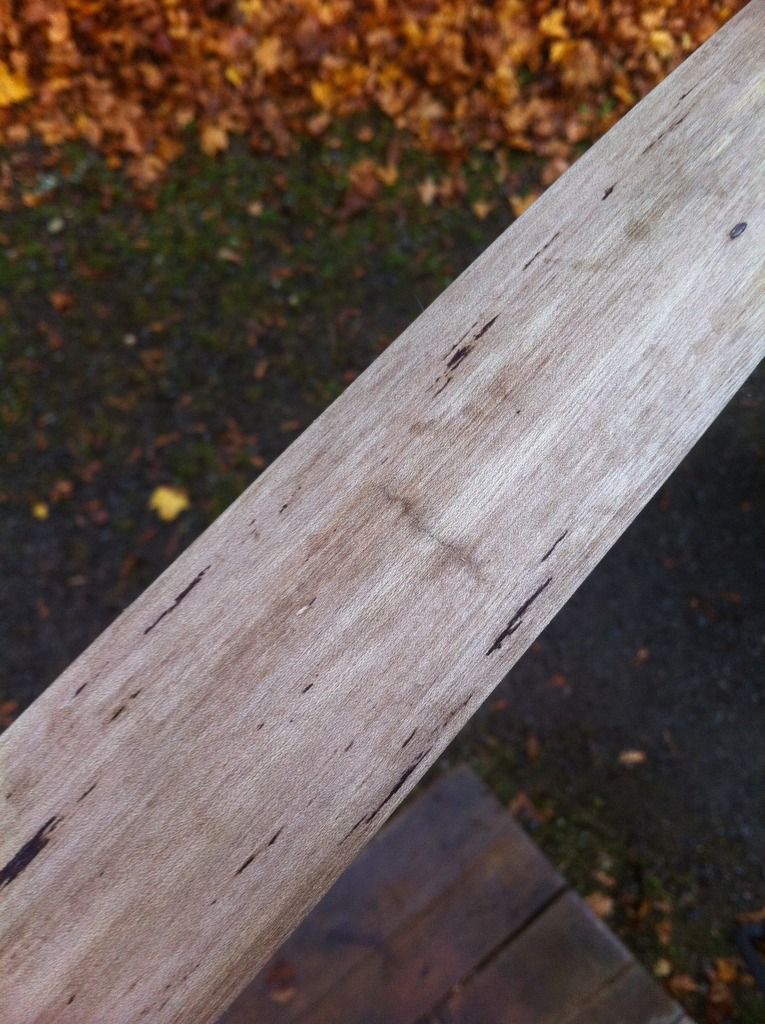So the worst happened. A fumed elm flat bow with a sinew backing, 63" ttt. I aimed at 45# at 26,5". Straight, easy stave, backing looked solid, 3" of reflex. I tillered it carefully and pulled to full draw about 50 times when I heard the dreaded "tick". My heart stopped for a second. Elm should be able to handle this kind of strain even without sinew so I figured it must have been my tiller tree or the wall (it was windy that day) that cracked, not the bow. I pulled it again, it showed no hinge, no loss of draw weight. I took it to full draw again. Another 20-30 times and there it was again, another distinct "tick".
I stopped. I've had it happen to me once before, the wood under the sinew cracking. That time I pulled the bow 3" farther than full draw and it showed a very obvious hinge and loss of weight afterwards. This time, nothing like that. The bow still looked good. But since I've already spent a so much time making the bow I figured better safe than sorry. I removed the backing, expecting to find a pristine back underneath, that it had just been the tiller tree or whatever. But, lo, there it was – an obvious crack running straight across the upper limb.
The limb is about 2" wide and the crack little over half of that. It seems to only run through the outermost ring. It opens slightly when I carefully flex the bow. Had I not already tillered the bow, I'd remove the outermost ring, but If I do that now I'l end up with a far lower weight than I want. Unless I compensate with a massive backing, which I don't really want.
So, do you think I can just do the old superglue trick? I'm thinking, flexing the crack open just a little bit and cram in superglue and let dry, and then add a thicker backing than last time (2,5 layers instead of 1,5). Will that work, you think, or am I just spending another X hours on an already lost bow?
